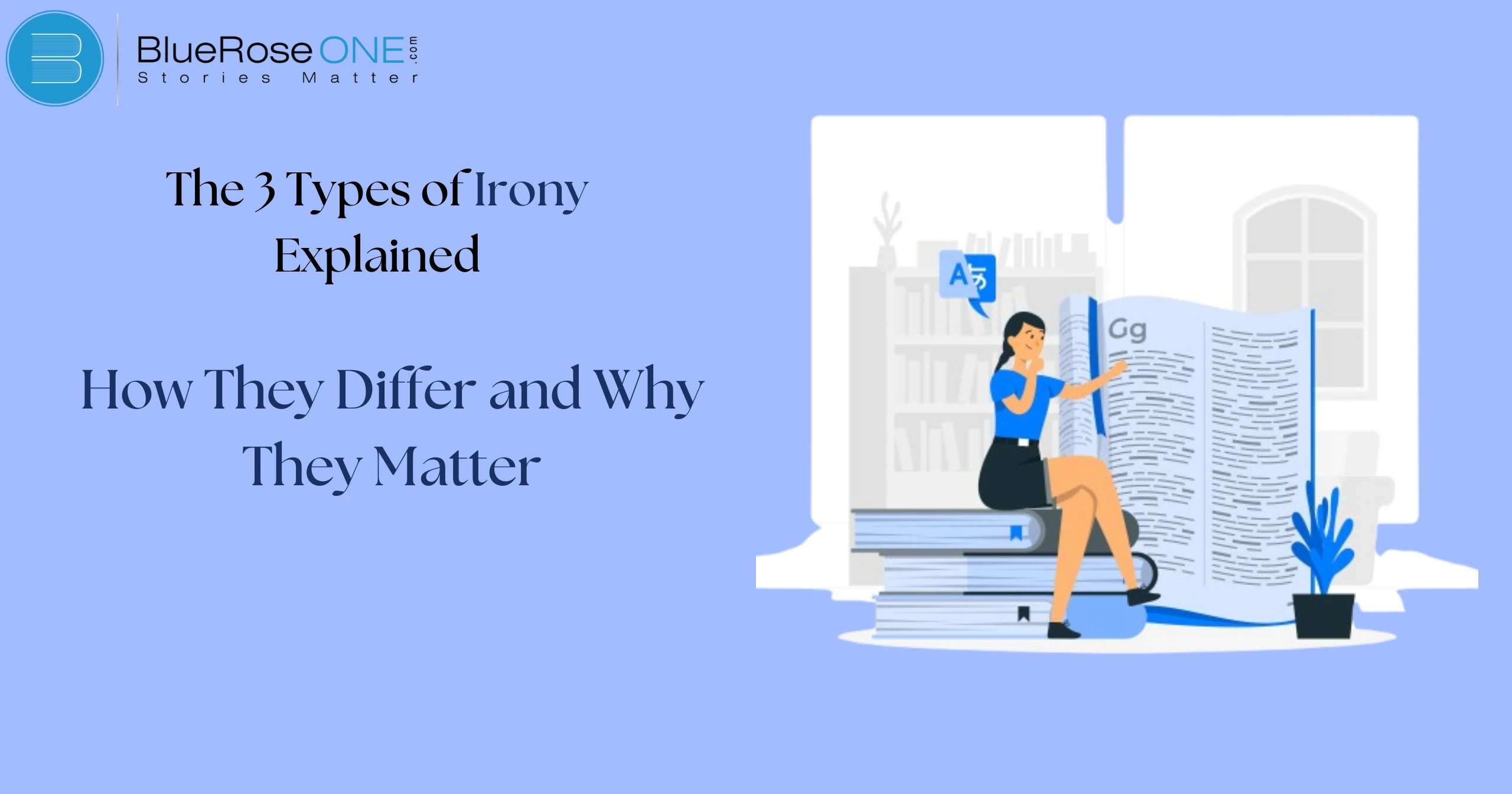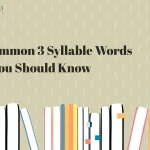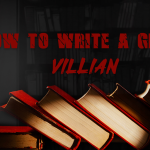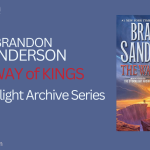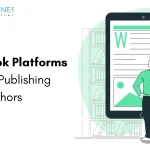One of those intriguing linguistic devices that gives fiction and everyday interactions substance is irony. Although it’s sometimes misinterpreted or disregarded, it can greatly enhance the interest level of a scene, dialogue, or story when utilized skillfully. Knowing irony is important whether you’re a writer, reader, or just someone who appreciates a good word play. However, what really is irony? Why is it important, and how does it operate? Let’s dissect it by examining the three primary forms of irony and their variations.
The 3 Main Types of Irony
Dramatic irony, situational irony, and linguistic irony are the three main categories of irony. Whether it’s disclosing knowledge to the audience ahead of the characters, upending expectations, or manipulating language to convey a different meaning, each type brings something special to the storytelling process.
1. Dramatic Irony
Dramatic irony, situational irony, and linguistic irony are the three main categories of irony. Whether it’s disclosing knowledge to the audience ahead of the characters, upending expectations, or manipulating language to convey a different meaning, each type brings something special to the storytelling process.
How Dramatic Irony Works
When a story’s characters are unaware of something, it can lead to dramatic irony. This builds suspense because viewers wonder how the characters would respond after learning the truth. In a mystery novel, for instance, the viewer might be aware of the villain’s identity while the protagonist is still on the hunt. This kind of irony works well because it creates tension and draws the viewer in, increasing their sense of connection to the story as it develops.
You may also read: Best Udemy Courses for Self-Published Authors
Examples of Dramatic Irony in Literature
Shakespeare’s “Romeo and Juliet” is one of the most well-known instances of dramatic irony. Romeo does not genuinely know that Juliet is alive, but the audience does. His choice to end his life as a result of this miscommunication gives the moment a great deal of emotional weight.
Why Dramatic Irony is Important
By giving them a sense of superiority because they are better knowledgeable than the protagonists, dramatic irony keeps the audience interested. Additionally, it heightens the tension as viewers tensely wait for the characters to find out the truth.
You may also like: Types of Characters in Fiction (and How to Use Them)
2. Situational Irony
Situational irony arises when there is a significant discrepancy between expectations and reality. Ironic examples include fire stations burning down because they’re the last places you’d expect to see a fire. By upending readers’ or viewers’ assumptions, this kind of irony surprises them and adds unexpected twists to frequently amusing or thought-provoking stories. Because situational irony defies expected results, it gives stories more complexity and keeps the audience interested.
The Unexpected Twist: What Makes Situational Irony Unique
When there is a dramatic divergence between expectations and reality, situational irony arises. This kind of irony gives stories more depth by producing surprising results that either shock or delight the audience. Situational irony is distinct in that it emphasizes the unpredictable nature of situations, in contrast to verbal or dramatic irony, which is focused on the actions of the story. By defying readers’ assumptions, these surprises can heighten the suspense and keep them interested.
You may also read: What Is Contemporary Fiction? Definition, Themes with Examples
Examples of Situational Irony in Literature and Real Life
In “The Gift of the Magi” by O. Henry, a couple sells their most valuable items to purchase gifts for one another. This is a famous example. But since the presents they receive are intended for the very things they sold, they wind up being useless.
Importance of Situational Irony in Storytelling
Storytelling benefits from situational irony because it can produce unexpected turns that take the listener by surprise. When things go differently than the characters or readers anticipate, the story gains complexity and interest. This kind of irony often evokes feelings such as shock, amusement, or empathy, which keeps readers interested. Situational irony draws attention to the discrepancy between expectations and reality, which deepens the story’s meaning and increases the plot’s resonance.
You may also read: How to Write a Book Description That Grabs Readers
3. Verbal Irony
When someone says something and means something else, that is called verbal irony. It’s frequently utilized to highlight a point or provide amusement. Verbal irony is used, for instance, when someone exclaims, “What beautiful weather!” while it’s pouring with rain to draw attention to the unfavorable circumstances. This kind of irony allows for more emotive and occasionally sarcastic communication by drawing a contrast between what is said and what is true. Literary works and daily conversations frequently employ verbal irony.
Difference Between Verbal Irony and Sarcasm
Although they are sometimes misunderstood, verbal irony and sarcasm differ significantly. When someone says one thing but means something else, it’s known as verbal irony. This is usually done to make a point or make a situation humorous. Saying “What a beautiful day” in the middle of a storm, for instance, is an example of irony.
Conversely, sarcasm is a more cutting kind of irony that is meant to belittle or express disdain. Although they both entail expressing the antithesis of what is intended, sarcasm is usually more pointed and abrasive. Wittiness and communication can be improved by being aware of these subtleties in irony.
Famous Examples of Verbal Irony
A well-known example of verbal irony is found in Jane Austen’s “Pride and Prejudice”, where Mr. Bennet tells his wife, “You are as handsome as the day I married you,” which is not exactly meant as a compliment.
You may also like: Why the Synecdoche Poetice Device Matters in Literature
Key Differences Between the Types of Irony
In casual conversation, verbal irony is frequently employed to highlight a point or provide amusement. It allows you to convey more information than just what is immediately apparent and reveals a deeper meaning to the audience.
Dramatic vs. Situational Irony
When the audience is aware of information that the protagonists are unaware of, dramatic irony arises, adding humor or suspense. In Romeo and Juliet, for instance, Romeo is unaware that Juliet is still alive, but the audience is. When something unexpected happens, situational irony ensues. A fire station burning down, for example, is ironic since it goes against what is expected of it. Both kinds of irony give stories more complexity by introducing unexpected or captivating turns.
Verbal vs. Situational Irony
Dramatic vs. Verbal Irony
When the audience is aware of information that the protagonists are unaware of, dramatic irony arises, building suspense and tension. Conversely, verbal irony occurs when someone says one thing while meaning something else, usually in a sarcastic or humorous way. The fundamental distinction is one of viewpoint: verbal irony relies on wordplay, but dramatic irony is predicated on the discrepancy between audience and character understanding. Both kinds of irony improve narrative by making it more nuanced and intricate.
You may also like: How to Avoid Plagiarism in Assignments: 10 Easy Steps

How Irony Enhances Storytelling
Irony is a potent tool for building suspense and tension in narratives. Dramatic irony is created when readers are aware of something that the characters are not, raising the stakes for what will happen next. This tactic keeps readers interested as they anticipate the revelation of the truth. In addition to adding complexity, situational and verbal irony also increases emotional impact and plot unpredictability by drawing a contrast between expectations and actuality. Irony makes narratives more intriguing and nuanced.
Building Emotional Connections Through Irony
By fostering an emotional bond between readers and characters, irony improves narrative. Readers are affected more deeply when characters encounter circumstances where expectations are not met. For instance, dramatic irony builds suspense and empathy by letting readers know something that the protagonists don’t.
Conversely, situational irony has the power to astound readers and elicit strong feelings. This emotional connection highlights the importance of irony in crafting gripping narratives by making stories more relatable and memorable.
You may also read: Best Udemy Courses for Self-Published Authors
Examples of Irony in Popular Culture
Irony is a common element in many films, TV series, and books that enhances the humor, suspense, or emotional depth of the stories.
Movies
Irony is a common tool used in movies to highlight character miscommunications or produce surprising outcomes. Situational irony is demonstrated, for instance, near the end of The Sixth Sense when it is revealed to the viewer that Dr. Malcolm Crowe, who is attempting to assist a young child in communicating with ghosts, is actually deceased. This kind of irony flips viewers’ assumptions and gives the plot more complexity. Irony is a literary device used in film to keep viewers interested and heighten the emotional impact of the story.
TV Shows
Irony is a common device used by TV shows to inject surprise or humor into their plots. Homer, who is portrayed in The Simpsons as being reckless and lazy, occasionally finds himself in circumstances that call for intellect or quick thinking, which might have unexpected results. This is a perfect example of irony.
The Office is another instance, where the characters’ heightened ineptitude stands in stark contrast to their work surroundings. These programs demonstrate how irony may produce humorous or provocative moments in popular culture.
Popular Books
Irony frequently appears in widely read novels, giving the narrative complexity and unexpected twists. Situational irony can be found in F. Scott Fitzgerald’s The Great Gatsby when Gatsby gives his all to earn Daisy’s love yet ultimately fails. Similar dramatic irony occurs in J.K. Rowling’s Harry Potter and the Sorcerer’s Stone, where readers discover Professor Quirrell’s true motivations before Harry does. These illustrations demonstrate how irony enhances narrative by building suspense and mystery.
You may also like: 7 Types of Conflict in Literature
How to Identify Irony in Writing
Irony might be difficult to detect, but you can become skilled at spotting it in writing and speech.
Tips to Spot Irony in Literature
Paying attention to the discrepancy between what is said and what really occurs is one way to identify irony in literature. Irony can be seen, for instance, when a character expresses confidence in their accomplishment but fails as a result. Keep an eye out for any surprising turns or inconsistencies, particularly in the speech and the plot.
Think about the tone as well; irony can be shown by sarcasm or hyperbole. Understanding irony improves your comprehension of the story’s underlying meanings.
Recognizing Irony in Dialogue and Descriptions
Identifying when words or circumstances deviate from expectations is necessary in order to identify irony in dialogue and descriptions. Irony frequently appears in language when a character says something that isn’t true to themselves, a phenomenon known as verbal irony.
Situational irony in descriptions occurs when things go in an unexpected or shocking direction. Observing these disparities enables readers to discern the more profound levels of interpretation. Gaining proficiency in spotting irony enhances your comprehension of a story’s meaning.
You may also read: List of Top 10 Famous Ravinders Singh Books of All Time
The Role of Irony in Creating Memorable Characters
Characters who use or experience irony often feel more realistic because their words and actions reflect the complexities of life.
How Characters Use Irony to Reveal Deeper Truths
Irony is a common device used by characters to disclose more nuanced aspects of their circumstances and self. For instance, a character can seem confident about the future but be inwardly uneasy. Their internal conflict is highlighted by this difference, which also helps to humanize them. Irony is a tool used by writers to develop enduring characters that make readers feel something. By using this tool, readers can learn about complex motivations and secret details that enhance the irony experience overall and enrich the plot.
Irony as a Tool for Character Development
Irony gives characters more nuance and complexity, which makes it a useful tool for character development. Tension is raised and a character’s internal problems are highlighted when their actions don’t match their statements or the situation. For example, readers may feel both pity and annoyance for a character who professes to appreciate honesty but constantly tells falsehoods. Because of this contrast, readers are able to connect with the character on a deeper level and find them more memorable. Irony is a tool that writers can use to create characters that are more complex and relatable to readers.
You may also read: The Rise of Shakti by Megha Dinesh: Book Review
Conclusion
Every kind of irony has a vital place in writing and communication. Whether you love a scene full of dramatic irony, a situational irony turn, or a deft use of verbal irony, these tactics enhance narrative by offering depth, humor, and complexity. Knowing the three different forms of irony and how they differ will help you become a better writer or reader as well as help you recognize irony in daily situations.

